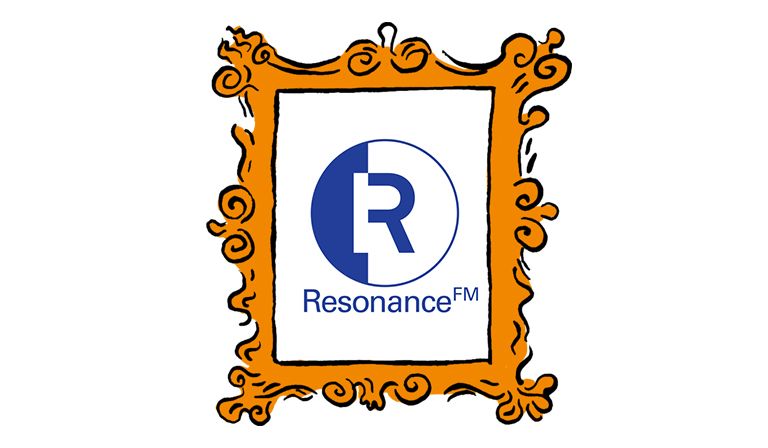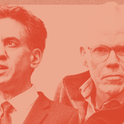During the Covid-19 lockdown in 2020, Resonance FM lost its studio on Borough High Street, south London, where it had been based for 13 years. “We managed to salvage our equipment,” says the radio station’s chief executive, Peter Lanceley, “but we spent four years with it in the lockup.” Without a studio, the station switched to remote programming, relying more on pre-recorded shows. “But there was a feeling that we needed a physical space.”
Last year, the community radio station—which was founded in 2002 and features everything from experimental music and sound art to talk programmes about theatre and video games—finally found a new home less than half a mile away from its previous premises, where it revived its live output. Between last September and December, it put out 150 live programmes; from this January to March, another 275. “There’s always a place for pre-recorded content,” Lanceley says, “but that feeling of liveness is just so important, the feeling of someone really being there with you, speaking in the now.”
It’s that “liveness” that marks the difference between radio and streaming, which is now the predominant form of music listening. An estimated 600m people subscribe to a music streaming platform globally, accounting for 84 per cent of the music industry’s revenue. But to use those platforms, most of all market leader Spotify, is to be at the whims of algorithms that feed you impersonally generated playlists—or even, increasingly, music written by AI.
But, contrary to popular perception, radio is far from dead. In the first quarter of 2025, 50m people (or 87 per cent of the UK adult population) tuned in to the radio every week. And while BBC stations and other mainstream outlets loom large, there is also a lively independent scene, including Bristol-based Noods and London’s Soho Radio. (The eclectic NTS Radio also deserves a mention, although it is now partially owned by the major record label Universal.)
Knowing there isn’t a human presence behind what you’re listening to, as is the case with streaming, can leave a conscientious music fan feeling “a bit disjointed” from the process of discovery—as Simon Goffe, director of Worldwide FM, tells me. Goffe founded Worldwide in 2016 with the DJ Gilles Peterson to champion global music, including jazz, soul and electronica. Today the station has 80,000 listeners a month and just six staff members. Its ethos is inherently inclusive, with its mission statement pledging allegiance to “marginalised voices, alternative perspectives and shared progressive values”, while it broadcasts from London and as far afield as New York, Mumbai, Seoul and Rio.
Live radio of all kinds offers a very different experience to streaming: by its nature, it feels intimate and more personal, even collaborative. The host—who might be an expert in their field, a treasure trove of anecdotes and specialist cultural knowledge—is introducing and listening along to the music at the same time as the audience. Listeners can write or call in (or, in the case of NTS, comment via an online chatroom) and directly contribute to the shape of a programme. None of that is possible with streaming; if live radio is a dialogue, then streaming is a one-sided conversation.
But independent radio, in particular, provides something even rawer. “Our programmes are produced on a voluntary basis by very skilled producers who win all sorts of audio industry awards,” Lanceley tells me. “But, fundamentally, volunteer radio gives that little bit of warmth and imperfection, a lack of polish.” There might be a longer-than-usual lag between tracks, or less sonic clarity than you’d expect on commercial radio—but the effect is one of familiarity, community. “It has that human element,” Lanceley adds.
The difficulty for independent radio is that, as listening habits have changed, listeners have become accustomed to getting music for little to no cost: you can listen to Spotify for free, for instance, or at a subscription price of £11.99 a month. State backing of the arts meanwhile feels shakier than ever, with local government revenue funding of culture services decreasing by 48 per cent in England between 2009 and 2022.
“It’s very hard to keep an online radio station afloat,” says Goffe. The situation got particularly bad for Worldwide FM in 2022, when the radio’s listenership—which had increased tenfold during the pandemic—dropped once lockdown was lifted for good. “We were spending more money than we were getting in. We had to pause everything.” Goffe tells me that the station has been “rebuilding in a more sensible manner” since 2023. It now relies on a small number of paying subscribers—500 at present—as well as partnerships with brands, which is proving to be a “more sustainable” model.
Meanwhile, Resonance FM is one of Arts Council England’s National Portfolio Organisations, meaning it receives multi-year funding. This allows the station to pay its two full-time staff—Lanceley and an artistic director—while the 500 hosts and producers who contribute each year do so on a voluntary basis. Its funding is secured until 2027, after which, if it were not extended, “we’d have to radically downgrade what we do, or seek alternative sources,” Lanceley explains.
In the meantime, the station is broadcasting out of one small studio, though in recent months it has been fundraising to build a second to double its capacity for live shows. The team hoped to raise £20,000; in fact, it has made over £40,000. “But,” Lanceley says, “the fundraiser is in part to survive. It doesn’t solve all of our problems. This kind of organisation is by its nature precarious.”
It’s a mindset Goffe shares. “I wouldn’t say we feel secure. I doubt any radio station feels secure.” Yet so long as there is a listenership for the community approach Worldwide FM favours, he doesn’t see them giving up. “[Our listeners] don’t want a world where everything is run by AI and algorithms. They see the value of something like us.”
Independent radio is still alive—and essential
It offers something that streaming services cannot: human connection
June 05, 2025










